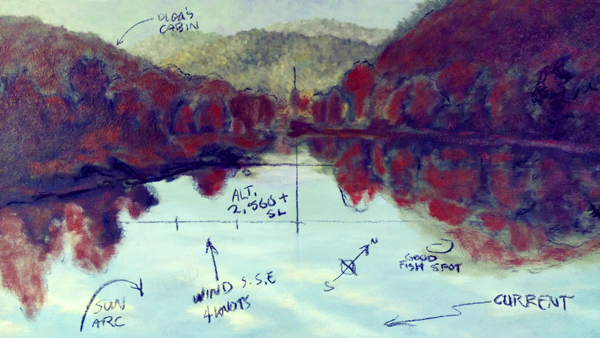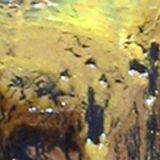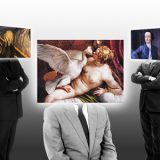Artist Survey Equipment
 Does Your Art Measure Up?
Does Your Art Measure Up?
By: Prof. Gulley Jimson, RA, Ph.D., AFT, RCA, PADI
Greetings, faithful students, and admirers of all things Jimson.
The response to the previous installment here on Art Twerks that announced the much-anticipated possible publication of my new book on the Jimson Painting-Method has been simply overwhelming. So much so, that we needed to hire an extra marmoset to help with sorting out all the mail. It turns out the little fellows are quite good at that sort of thing.
As regular followers, I’m sure you are aware of my unorthodox approach to art, and particularly to how I paint. Since I am primarily an oil painter, most of the methods and materials mentioned in this volume are directed to that medium. When necessary, however, I will refer to products and methods that lend themselves to other mediums, such as acrylics, egg tempera, asphalt—to name but a few.
Now, down to the nitty-gritty of this posting.
An astute Art Twerks reader has submitted a question to the Professor concerning the use of survey equipment when planning a painting. Intriguing question. One wonders what kind of painting is to be planned. Still, the Professor is pleased to hear that someone is at least “planning” a painting. These days it appears planning means placing a head in the middle of the canvas, splattering the field with expressive marks, dribbles, and daubs, or presenting an image so obtuse that it requires a written narrative in the attempt to justify its existence.

With that thought let’s go back a few hundred years to when planning was a big deal. An obvious example is the work of Leonardo. We tend to forget that he was a well-respected engineer, best known for military fortifications, redirecting rivers, and arranging dinner parties for his bosses. The use of surveying equipment was crucial to his work and livelihood.
We only need consider that most admired painting we call “Mona Lisa.” If one looks carefully beyond her enigmatic smile, we find an enchanting landscape. This could only have been envisioned by an engineer using survey equipment. The placement of the figure relative to the background indicates a complete understanding of linear and spatial perspective.
But wait! The actual title of the painting indicates something else. It is a little-known fact missed by Vasari, that at the time Mona Lisa was painted she served another, more practical purpose…this image was created to be an advertisement for a proposed condominium complex to be developed in that landscape. The woman depicted was actually the mistress of the developer who wanted to impress her and shut up his rival builders who liked to call her “Moana Lisa” due to the sounds she was reputed to make.

That aside, the title was to be a tribute to her and the proposed condominium development. Unfortunately, the condo development only produced one building, hence the name La Giocondo—or Giaconda for Ms. Lisa. Plans had to be scrapped for the Anaconda, the Rondaconda, and the St. Marie Condo.
So, dear reader, the Professor highly recommends the use of survey equipment. Why else would artists be advised to survey the world and cosmos for inspiration? An artist needs the proper equipment to do so.
For those of you who do not have the funds for high-tech equipment, a simple plumb-bob and a length of measuring chain from a local hardware store or online will suffice to get you started.
Please note:
Due to the high volume of interest in my book, I plan to include an entire chapter on how to conduct a proper survey for your painting and party-planning needs. I will commence writing it just as soon as my survey team returns with all the equipment. Curiously, they are a few weeks overdue in contacting me from their last survey project. But I expect them to do so any day now. This sort of delay can occur when attempting to map a complicated landscape scene in Okefenokee Swamp. Alligators have developed a taste for surveyors and government officials, I am told.
“Every line is the perfect length if you don’t measure it.”
~
In the meantime, paint like there’s no tomorrow, ’cause someday there won’t!




